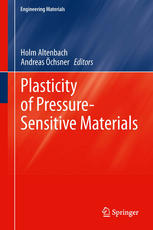

Most ebook files are in PDF format, so you can easily read them using various software such as Foxit Reader or directly on the Google Chrome browser.
Some ebook files are released by publishers in other formats such as .awz, .mobi, .epub, .fb2, etc. You may need to install specific software to read these formats on mobile/PC, such as Calibre.
Please read the tutorial at this link: https://ebookbell.com/faq
We offer FREE conversion to the popular formats you request; however, this may take some time. Therefore, right after payment, please email us, and we will try to provide the service as quickly as possible.
For some exceptional file formats or broken links (if any), please refrain from opening any disputes. Instead, email us first, and we will try to assist within a maximum of 6 hours.
EbookBell Team

4.7
106 reviewsClassical plasticity theory of metals is independent of the hydrostatic pressure. However if the metal contains voids or pores or if the structure is composed of cells, this classical assumption is no more valid and the influence of the hydrostatic pressure must be incorporated in the constitutive description. Looking at the microlevel, metal plasticity is connected with the uniform planes of atoms organized with long-range order. Planes may slip past each other along their close-packed directions. The result is a permanent change of shape within the crystal and plastic deformation. The presence of dislocations increases the likelihood of planes slipping.
Nowadays, the theory of pressure sensitive plasticity is successfully applied to many other important classes of materials (polymers, concrete, bones etc.) even if the phenomena on the micro-level are different to classical plasticity of metals. The theoretical background of this phenomenological approach based on observations on the macro-level is described in detail in this monograph and applied to a wide range of different important materials in the last part of this book.